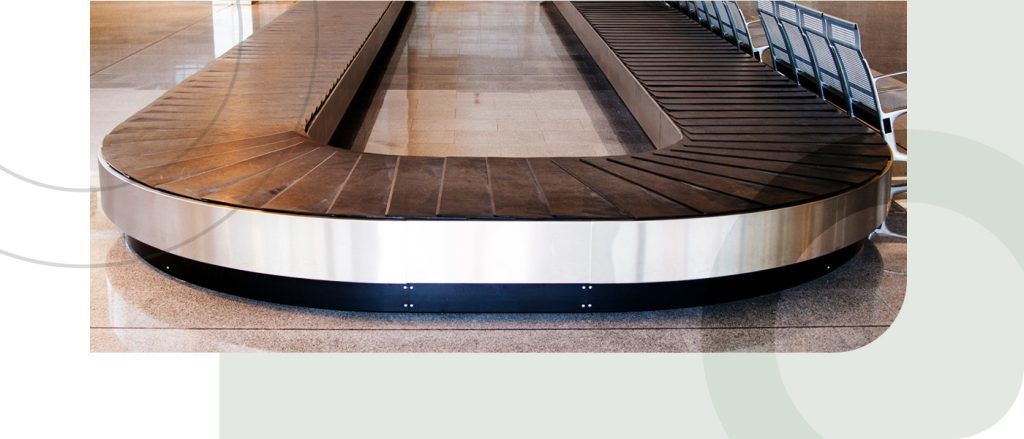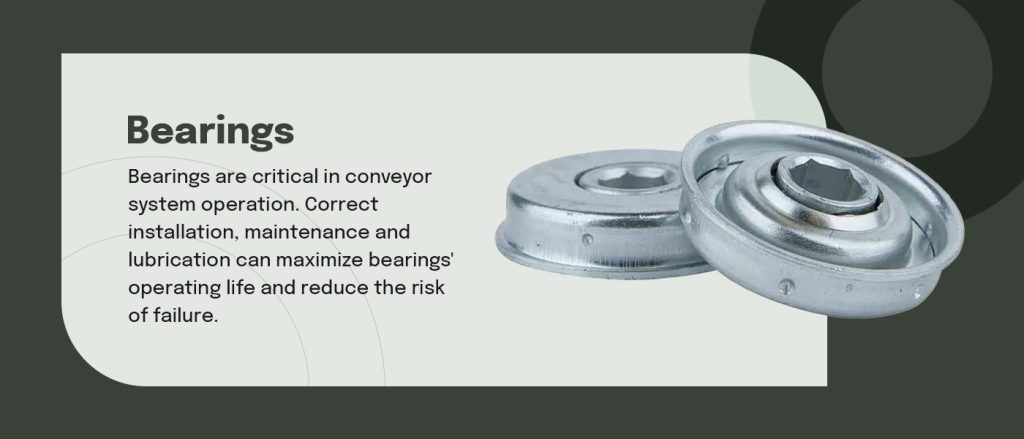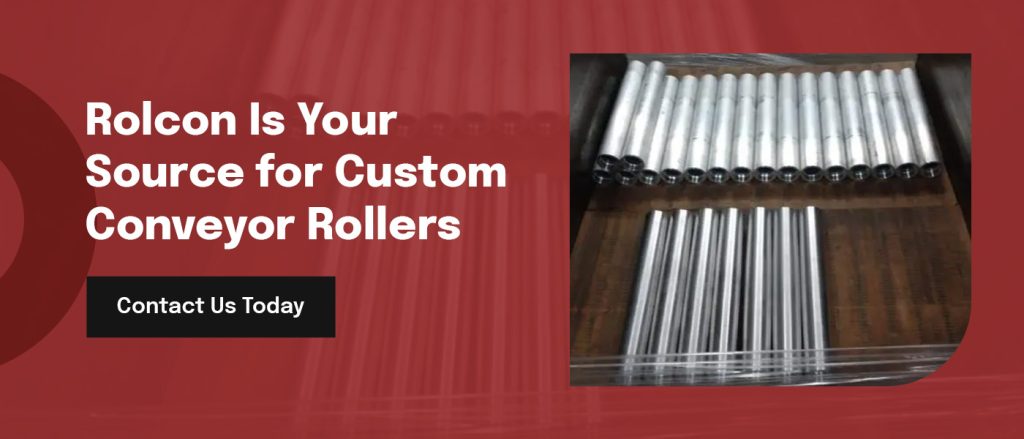
Conveyor systems are essential for businesses that move heavy or bulky materials from one point to another. However, these can be expensive to purchase and install, so it’s essential to ensure your investment lasts as long as possible. Read on for tips on how to extend the life span of your conveyor system.
Opt for High-Quality Components From the Start
Outfitting your conveyor system with high-quality components is an excellent way to maximize its use. You may feel tempted to buy cheaper parts to save money in the short term, but they’ll wear out more quickly and require more frequent replacements.
Rolcon has been a leading conveyor roller manufacturer since 1988. We produce a wide range of roller sizes for various industries. While our replacement conveyor rollers fit most popular conveyor manufacturers, we can also custom-design and build rollers to your unique specifications.
Operate the Conveyor System as Intended
Engineers design and build conveyor systems for specific purposes, applications and weight ratings. Operating your conveyor as intended reduces wear and tear, extending the life span of conveyor components.
Using conveyor systems outside these parameters can put undue strain on the parts and cause them to wear prematurely. Train your employees to use your conveyor system correctly and understand its limits. Avoid placing excessively heavy or large loads on the conveyor, which can damage or wear down the components.
Perform Regular Maintenance
Regular maintenance is a crucial factor in extending the life of your conveyor system. Without it, the conveyor system can suffer unnecessary wear and tear, leading to failure, unplanned downtime and potentially costly repairs.
Proper maintenance ensures optimal performance while minimizing the risk of malfunctions and downtime. It helps keep the conveyor system in working order, enabling it to operate more smoothly, efficiently and safely than poorly maintained systems.
Preventive, not reactive, maintenance is the best way to promote conveyor system longevity. Consider two primary aspects of preventive maintenance.
- Inspection: Perform frequent checks to identify any signs of wear or damage, such as frayed belts or loose bolts. Promptly address any concerns to prevent them from becoming more severe.
- Cleaning: Regularly clean the conveyor system to prevent dust and dirt accumulation and ensure it’s free from debris. These measures will prevent damage and help it continue running smoothly.
In addition to frequent inspections and cleaning, preventive maintenance may entail lubrication, alignment and adjustment to prevent potential malfunctions and reduce the inevitable downtime that follows.
Watch for Signs of Malfunction
Be alert to the following conveyor system behaviors and components that may indicate a problem.
Mistracking
Mistracking of a conveyor belt can have several adverse effects on its operation. Often, mistracked belts result from improper loading or problems with various parts of the conveyor, such as misaligned idlers or the buildup of abrasive materials along the side of conveyor belt rollers.
One of the chief risks of mistracking is material spillage, which can reduce productivity and profitability and even create safety hazards.
Mistracked belts also risk damage to the belt edges and conveyor structure.
Material Carryback
Material carryback can harm conveyor belt operation in several ways. Carryback refers to any material that remains attached to the conveyor belt past the discharge point. The conveyor system “carries back” the material until it falls off the conveyor or you remove it.
Material carryback often leads to belt mistracking and subsequent issues, requiring workers to perform hazardous manual cleanup. It can reduce belt-cleaning efficiency, damage the belt or other mechanical equipment and lead to chute plugging problems.
Carryback often accumulates on idlers, increasing friction and contributing to bearing failures.
Belt Slippage
Belt slippage in a conveyor system can cause a whole cascade of additional problems, including the following:
- Material spillage
- System blockage
- Wear and tear
- Belt failure
It can also lead to damage or breakage of the motors, motion failure and even employee injury. Additionally, belt slippage can impact the accuracy of weighing devices used in conveyor systems. Regularly inspecting your conveyor system, especially the pulleys that move and rotate the conveyor belts, can help prevent belt slippage.
Belt Damage
Belt damage is a significant issue in conveyor systems, as it can lead to costly downtime, repairs or even the elimination of the belt from further use. The conveyor belt gets exposed to wear due to working conditions, continuous movement, contact with rotating components and transported material.
A common form of conveyor belt damage is impact damage, which occurs when large or sharp materials strike the top belt forcefully enough to scratch or puncture it. Belt damage can cause the following issues:
- Increased running resistance of belt conveyors
- Increased electric power consumption
- Increased friction between the rollers and the conveyor belt
Promptly identifying and repairing belt damage can prevent further damage and ensure the conveyor system operates efficiently.

Bearings
Bearings are critical in conveyor system operation. They’re integral components in a conveyor system’s carrying, return and impact idlers subsystems.
Operation exposes idler roller bearings to high dynamic loads, impacts, vibration, dirt, moisture and significant temperature changes. Failed bearings can result in increased downtime, revenue loss and missed delivery.
Correct installation, maintenance and lubrication can maximize bearings’ operating life and reduce the risk of failure.
Pulley Alignment
Proper pulley alignment is crucial for an efficient conveyor system. Misalignment between the drive shaft and pulley axis can cause vibration, rapid wear and even shaft shearing when the motor generates high power and torque.
Referring to the original design criteria is the best way to assess whether your pulley system has become misaligned and if you need to make corrections to return it to its original state. An aligned pulley system helps you avoid equipment damage, reduce maintenance costs improve the conveyor system’s overall efficiency.
Conveyor Roller Damage
Conveyor roller damage can significantly impact a conveyor system’s operation, affecting the following:
- Running resistance
- Power consumption
- Roller and belt life
- Maintenance workload
- Cost of transportation
Debris and buildup are common causes of conveyor roller damage. Individual rollers can stop rotating due to structural damage or debris buildup, causing the rollers to seize and the conveyor system to malfunction.
Regularly cleaning your conveyor system can keep your rollers clear of debris and extend their operating life.
Rolcon Is Your Source for Custom Conveyor Rollers
Extending your conveyor system’s life requires using high-quality components, operating it correctly, performing regular maintenance and identifying signs of malfunction. Following these tips ensures your conveyor system lasts as long as possible, saving you money and reducing downtime.
Whether your requirements are large or small, Rolcon has the capabilities to meet your needs. We proudly make our replacement rollers in the U.S., offering competitive pricing and excellent delivery. Contact us today to find the best rollers for your application.
